- For over two decades, Great Little Trading Company (GLTC) has been one of the most successful online retailers of toys and family furniture
- The problem was lack of control that meant its site, in the words of CEO Jamie Reeve, “was becoming dated and functionality that had been on our wishlist for years still wasn’t progressing”
- But migrating 9.6K product attributes, 1.1M customers, and 10M orders was no small feat
Why does an award-winning industry leader cross ecommerce’s most uncomfortable road?
Founded in 1997,Great Little Trading Company(GLTC) is one of the UK’s most decorated and successful retailers of high-quality toys and upscale family furnishings. In addition to 40 other industry honors in the past half-decade alone, it’s also won …
- Best Online Retailer in 2016
- Best Independent Retailer in 2015
- Best Children’s Retailer 10 times since 2004
“We’re parents,” says CEO Jamie Reeve. “We get it. I didn’t feel the market catered for parents who wanted good quality, classic, stylish products. There was a lot of plastic and not enough time or money spent on good design. Just because you’re a parent doesn’t mean your house has to become a style-free zone.”

我n other words, GLTC never looks for a way to be “good enough.” They go above and beyond to give their customers what they want and need.
Why did GLTC cross the road? To get to the other side …
Ecommerce Migration Case Study: Table of Contents
- Picking a New Ecommerce Platform
- Choosing an Agency for Migration
- Making the Migration Journey
- Was the Destination Worth the Journey?
- Nowhere Near the End of the Road (Results)
我f you’d like to schedule a demo or talk to a migration expert …
Picking a New Ecommerce Platform
“Having been on our current platform for 10 years,” explains Jamie, “we decided it was time for a change.”
For GLTC, there were several limitations on how far their old platform could take their business.
The first problem was lack of control.
“We were restricted to release cycles that needed to be planned heavily in advance. The website itself was becoming dated and functionality that had been on our wishlist for years still wasn’t progressing.”
我t wasn’t a matter of technical expertise, GLTC simply didn’t have access to what they needed nor the freedom to make changes to the front end quickly.
Second was the lack of customer-facing functionality.
Even when they managed to free up development time for release updates, GLTC couldn’t always accomplish the things they needed.
The items missing from their toolkit weren’t nice-to-have, they were essential for giving their customers a better shopping experience.
- AB testing
- Product sets
- Guest checkouts
- Third-party payments
- Sale and discount notifications
- More intuitive product collection pages
我t was really important to us,” notes Jamie, “that we found a platform that could improve on our basic functionality and give us the freedom to grow.
GLTC didn’t just need a new website, they needed to be able to work, grow, and scale according to customer demand.

“We had a shortlist of the usual ecommerce providers, we researched their functionality and methods of working. When we found Shopify Plus, we spent a lot of time researching the product and other websites using the platform,” Jamie says.
“Choosing the right ecommerce platform all came down to the product, and Shopify’s core product is fantastic. All the functionality we needed was there. In fact, it opened up a new world of possibilities that we hadn’t even considered.
“We were confident in how stable the platform was and secure in the knowledge that there would be no hiccups on Black Friday!”
Choosing an Agency for Migration
While Shopify Plus is often considered the most accessibleglobal ecommerceplatform on the market, smart business is to handle what you are good at and delegate the rest.
“We always knew it would be a long-term project and for us it’s important to have a good relationship with anyone we work with,” says Jamie. “We wanted to find an agency who could support our ongoing needs as we continue to grow and build a partnership.”
“Rather than trying to customize a theme according to our requirements, we wanted bespoke web design and build as well as new functionality. For that, we would need Shopify experts. A task of this size was beyond our capabilities.”
This was a large and complex migration requiring:
- Custom site design that reflected the brand and drove sales across multiple collections with SKUs from numerous suppliers
- Sensitive data on products, customers, and over a decade of order history information that GLTC absolutely had to have
- 我ntegration with warehouses, suppliers, distributors, and Google Tag Manager with analytics and marketing partners
We started reading Shopify Plus blogs — that was our migration advice Bible. We read endless case studies of clients in a similar situation to ourselves and numerous articles on ‘the top Shopify websites.’”
Needless to say, GLTC did their homework to generate a shortlist of the agencies responsible for the work that impressed them the most.
“这,”杰米说,“领导深入范围period, whereby we briefed all agencies on functionality requirements, systems we work with and methods of distribution. We went into a consultation period then decided on the agency based on their expertise, portfolio, overall approach, project management style, capabilities, budget and of course who we felt could be a partner for GLTC.”
After an exhaustive research and elimination process, GLTC finally found their partner: London based Shopify Plus expertsUnderwaterpistol(UWP).

Having built store #90 on Shopify way back in 2006, UWP has a long history in the Shopify environment, and their extensive migration portfolio made GLTC feel confident that they were in safe hands.

“No two migrations are the same. But, on Shopify Plus, the combination of world-class integrations and a platform specifically designed to support international growth provides merchants full control over their business.”
The beauty of Shopify Plus is that it caters to ambitious businesses, especially those that are ready to take their brand to the next level.
Making the Migration Journey
GLTC was ready to start the process of moving to their new home. Like any long journey, it’s best to have a map before you take off into the unknown.
UX and Design
Research and planning are too often overlooked when designing websites. Many think of design as making storefronts look good, that being pretty is what’s important.
Looking good matters, but what really counts is user experience.
How does the site function? Does it work well for its intended purpose and audience? GLTC decided to get user experience in order before moving further into the project.
“We appointed Underwaterpistol to do a comprehensive UX audit for us, which provided extremely valuable insight into our online store. Their experts were able to highlight pitfalls in our current website that we hadn’t noticed and they gave us a list of quick wins for the new wireframes.”
UWP and GLTC’s internal design team worked together on a UX workshop that highlighted problems with the existing site using in-depth analytics, heat mapping, and user testing.
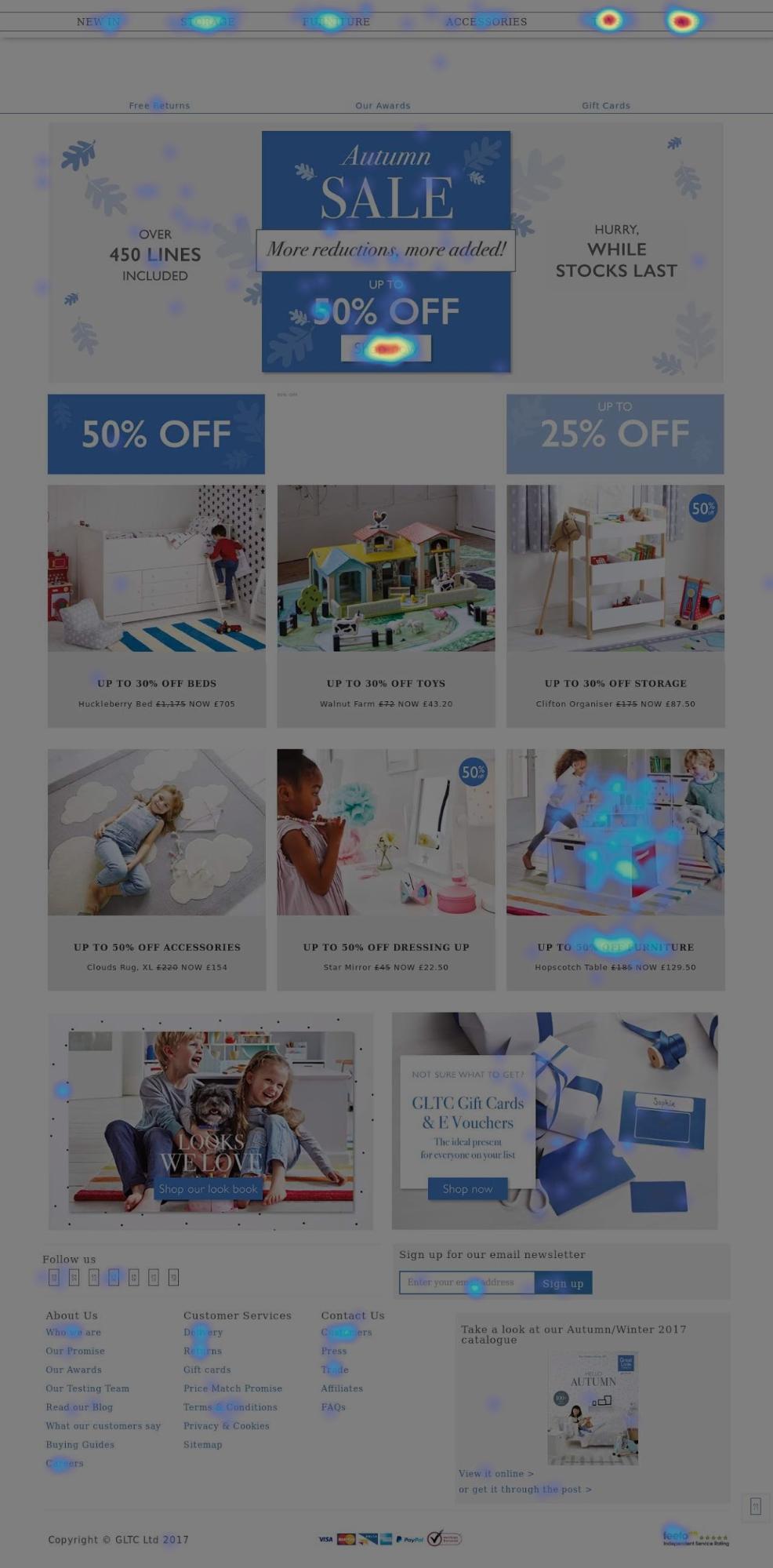
One key finding was that navigation was a major issue.
Heatmaps showed that the primary navigation leading to products categories was getting very little use. User testing showed that customers didn’t connect with product categories. It was clear that customers wanted the option of sorting by room selection or product purpose.
Once existing site issues were uncovered, GLTC and UWP sat down and discussed ways to improve problematic elements like header, footer, and navigation changes. Screenshots and notes were taken and, afterward, wireframes created.

The teams traded copy-heavy pages for clear text and easy-to-understand visual elements. These changes were intended to make the new site layout cleaner and easier to use, making navigation a helpful tool, rather than a source of confusion.
SEO
Organic search traffic is key to the long-term health of any store. Ads and social media can drive large visitors, but it’s even better when customers come to you.
For established merchants, losing ground in search engine rankings is a serious migration concern. Temporary losses of traffic are common, and poorly handled migrations can even cause a long-lasting downturn in organic traffic.
For GLTC, SEO was a particularly pressing concern …
More than 100,000 404 errors, duplicate pages, and loading speed problems were hurting sales from search traffic. Because of this, the migration created an opportunity to improve organic traffic instead of losing out.
Learn more:Online shopping statistics
When tackling SEO for a large store, the Shopify Plus platform itself takes care of several technical SEO worries. Page loading speeds, site mapping, and readable URLs are optimized as a part of the core Shopify product.
To improve on this, the migration would address three key areas:
1. Content
Any store with a large product offering has huge potential for organic search engine traffic. To make sure GLTC benefited from this, optimizing product page SEO was a key focus. Product titles and descriptions needed to be aligned with on-page content and the needs of searching customers.
2. URL redirects
As URL structures changed during migration, each product and collection page URL from the old site needed to be pointed towards its equivalent on the new site. This prevents a loss of ranking from existing results. When searchers or Google’s spiders follow a link through to the old URL, they must be taken to its corresponding page on the new GLTC site.
3. Monitoring
Google Analytics and Search Console were integrated and used to monitor any SEO issues that arose. This would also allow GLTC to continue measuring the results of their SEO efforts into the future.
Data Migration
Moving data for smaller stores is not typically a big deal, and there are even DIY solutions available. That changes when you start talking about a store with thousands of product-related data points, millions of customers, and more than a decade of order history.
“我们知道进入这个项目,“杰米回忆,“that the data migration was going to be a mammoth task. We assigned Underwaterpistol to manage this for us, transferring files over in chunks, including existing order notes, order IDs, and history.
Despite the challenges, Underwaterpistol took care of everything, ensuring we didn’t lose any data while maintaining our current SEO.
There was not only extensive ecommerce data but also CRM data, warehouse data, as well as data from multiple third-party systems and tools.
The goal was to collate everything, organize it according to agreed requirements, and migrate over to Shopify Plus backend … without interrupting GLTC and its partners’ ability to take, process, and ship orders.
To do that, a middleware app was created that automated a host of workflows, four of which are outlined below:
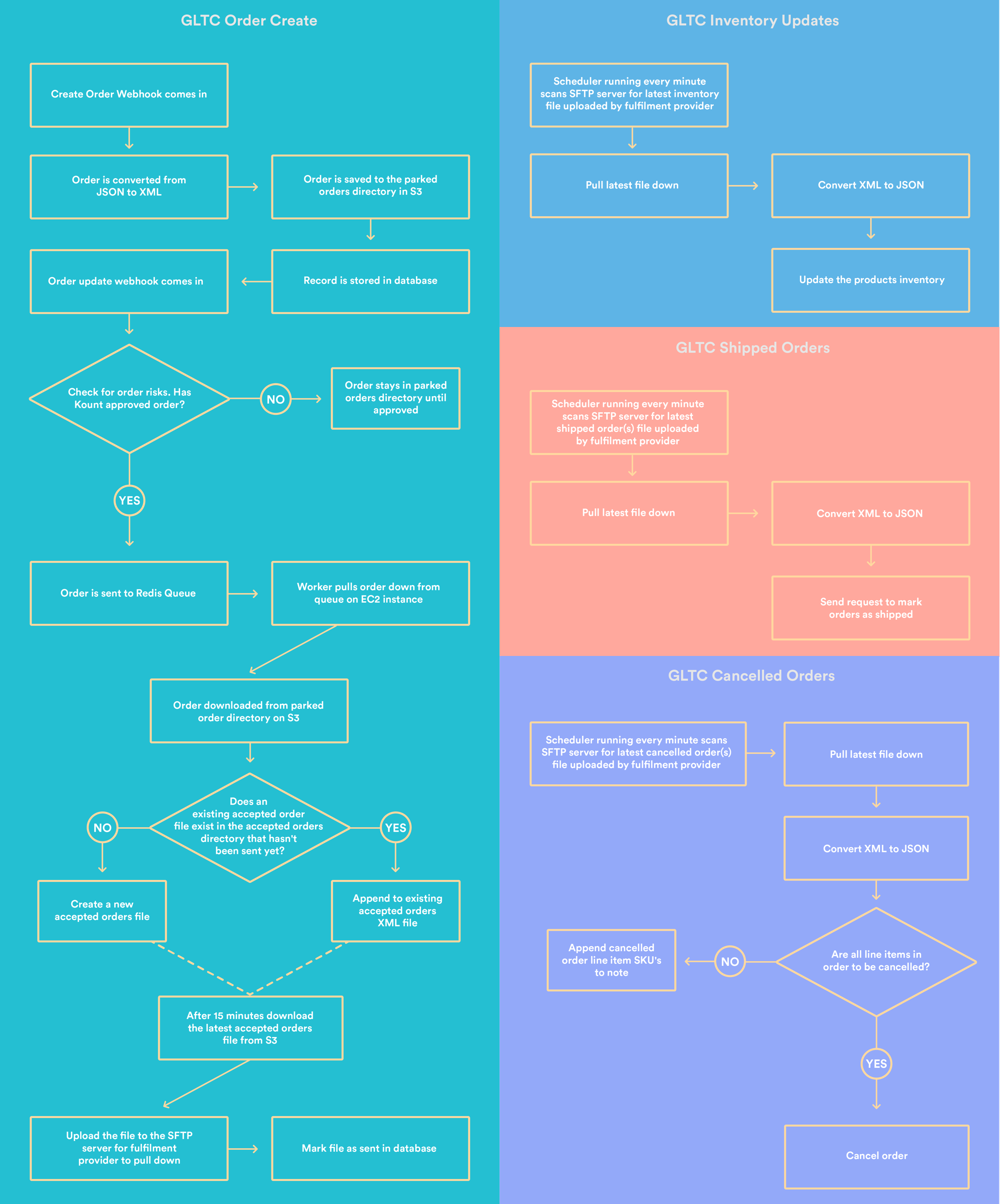
This bespoke software allowed each of GLTC’s third-party providers to continue using their own software systems while communicating with the new Shopify store.
Next, came the data itself …
Products
Over 800 existing products meant over 9,600 individual data points had to be carefully transitioned to the new Shopify system:
- 4 tags per product
- 3 sizes per product
- 3 images per product
- 1 metadata per product
- 1描述/产品
Customers
有了产品数据,当时时间错过grate 1.1 million customer records, including:
- Emails
- Names
- Account IDs
- Associated third-party data
- Contact and shipping information
Once migrated, it had to be reconciled to make sure that everything was accurate and formatted so that it could be recognized by Shopify’s systems and third-party partners.
Multiple addresses, duplicate accounts, and dead emails all had to be removed or reconciled.
To bring existing customers into the new system, they would have to activate their account and set a new password. To handle that without losing customers, the account activation process had to be as clear and straightforward as possible.
Orders
The final step was to migrate over 10 million individual orders, including:
- Order notes
- Purchase history
- Currently active orders
- 折扣和供应商的标签
All this intricacy begs a fundamental question …
Was the Destination Worth the Journey?
Unlike most journeys, what really matters in migration is the destination. Keeping in mind the challenges above — most notably, GLTC’s desire for customer-facing functionality and internal freedom — a host of results deserve mention.
To start, the new homepage, navigation, and overall site aesthetics now allow GLTC simplified control over content updates, including sales and promotions.
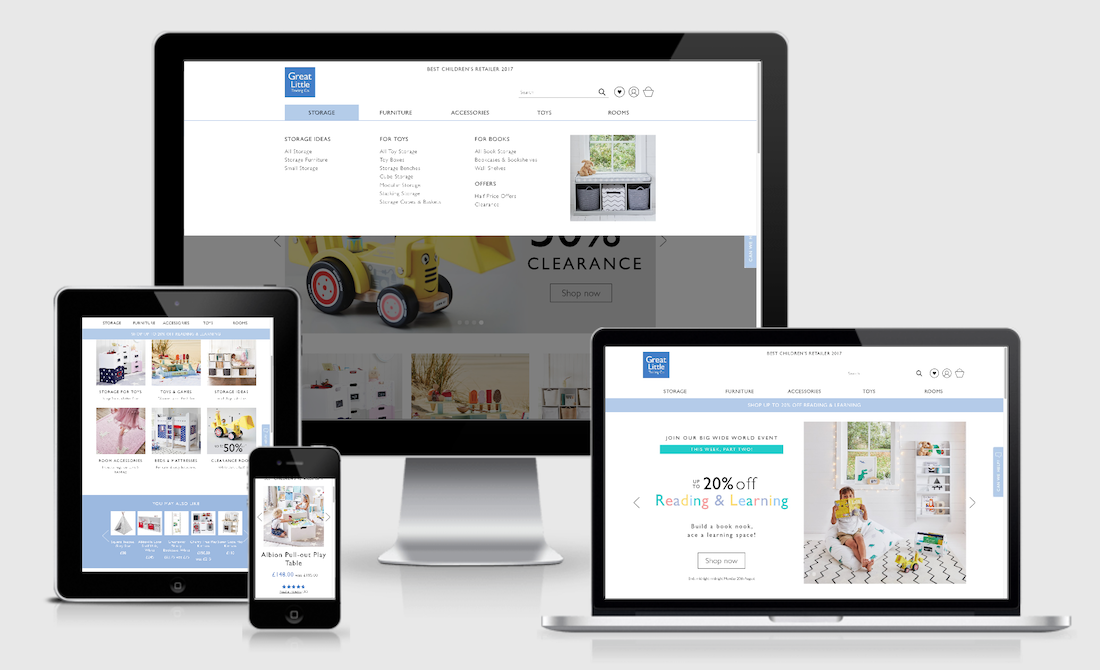
While GLTC could run promotions previously, the integrated Shopify content management system makes it easy to change page templates to reflect current promotions, events, and new products without needing a developer or planning long deployment cycles.

For customizable products, swatches let customers see changes in real time and keep variations accessible on a single product page, rather than having users skip around the site to make choices between different colors and patterns.
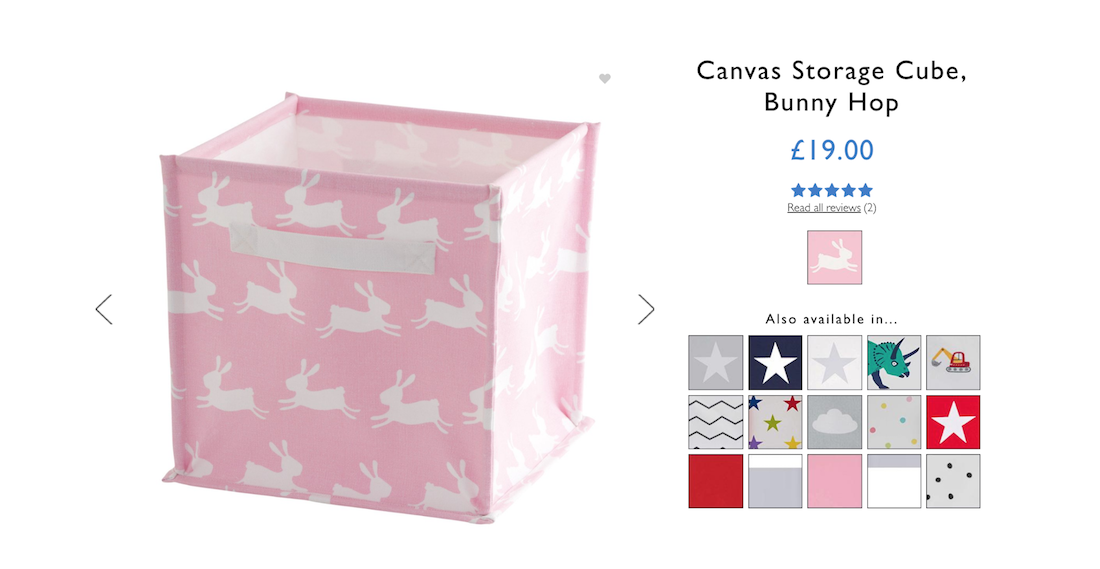
Adding delivery info on product pages through tabbed navigation preempts customer questions and service issues.

Another element of the new product page tabs is the ability to complete a set. This feature inspires customers and makes it easy to add matching products to the cart.
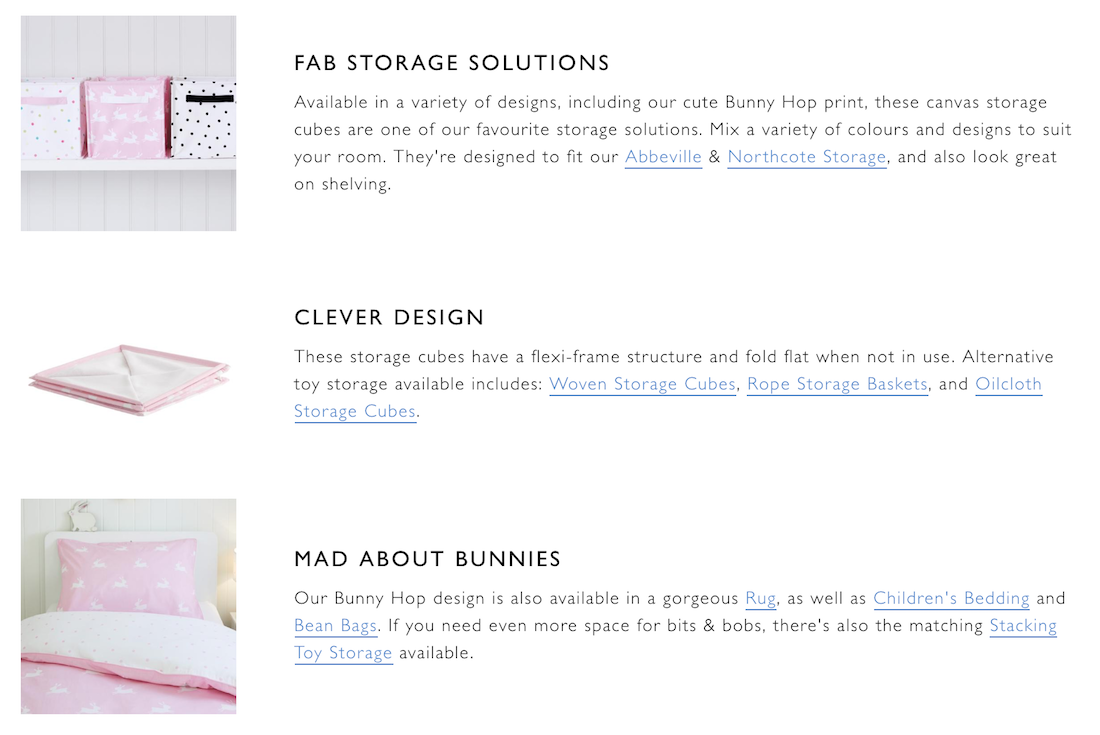

Allowing guest checkout and delaying account creation reduces buying friction and increases customers willingness to check out. Third-party payments increase trust and overall conversion rate. Part of that is due to added convenience, and part of it is the appearance of trust.

Product collection options were carried over from their previous platform, allowing customers to easily sort through large collections and find the particular products they want to shop for. But, improved sorting means less frustration and a faster time to purchase.

Similarly, the“Shop by Room”page clever uses a dropdown selector to render blog posts with complete sets for inspiration and purchase:

As a final touch of customer-facing functionality, GLTC’s onsite search helps customers find exactly what they’re looking for with visual merchandising, search suggestions, and error-tolerance for misspellings:

Nowhere Near the End of the Road (Results)
Now in their 22nd year, GLTC is still growing, just like the children and families they serve. They’ve started a new chapter, this time focusing on how they can serve their customers without being limited by their ecommerce platform.
From start to finish, the redesign and migration process took a total of 16 weeks. The collaborative effort to redesign the site created something that is both functional and beautiful.
Although GLTC hasn’t been in their new home for long, they’ve already seen improvements in several key metrics over the last three months:
- 6% conversion rate lift
- 10% increase in overall orders
- 10% increase in session duration
- 24% decrease in sitewide bounce rate
- 80% increase in pages viewed per session
As important as the numbers, Great Little Trading Company finally has the freedom they need to work more effectively. They no longer have to wait through long development and deployment cycles.
With their new home on Shopify Plus, Jamie and the GLTC team are looking forward to the future, with a home for the business that is fast, flexible, and effective.
Read More
- How Migrating from Demandware Saves This Fitness Empire Over $250K a Year
- Digital Transformation: How YM Inc. Is Using Shopify Plus to Reimagine Its Retail Future … Online
- How 2 Chainz Sold $2.1 Million of Ugly Santa Sweaters in 30 Days
- How ORO LA Became a Multi-Million Dollar Fashion Brand in Two Years by Fueling Shopping on Instagram with “Imagination”
- Black Friday Scalability Allowed Bombas to Hit $50M in Annual Sales & Grow 300%
- How RIPT Apparel Turned $3,000 Into $4 Million Selling One T-Shirt At a Time
- [Case Study] How Lauren James Co. Used Shopify Plus to Rapidly Grow Brand Awareness & Sales
- How Bohemia 4X’d Sales After Migrating & Supports the Survival of Artisan Crafts
- How Velour Lashes Automates Holiday Ecommerce Sales & Won Beyoncé’s Loyalty
- How Channelling “Your Inner Ten-Year-Old” Is the Secret to Brandon Steiner’s $50 Million Empire






